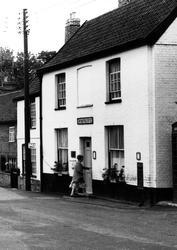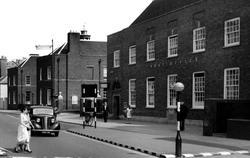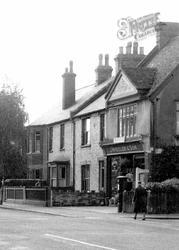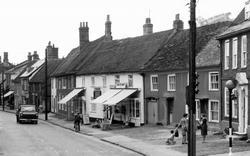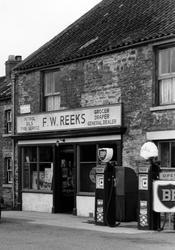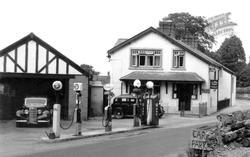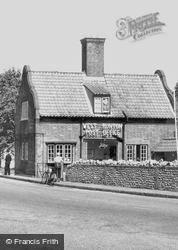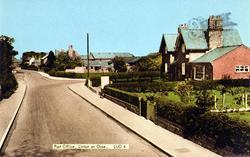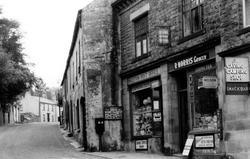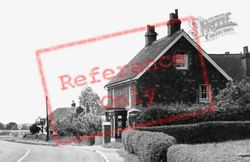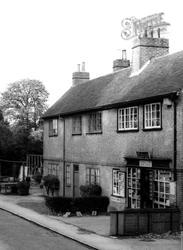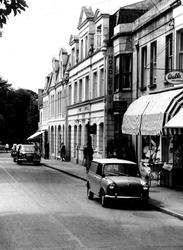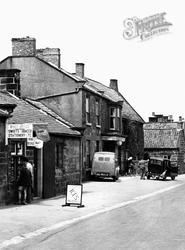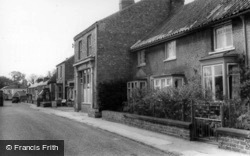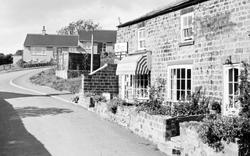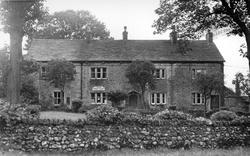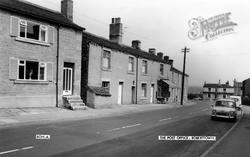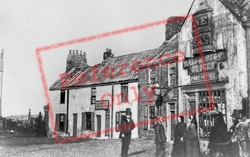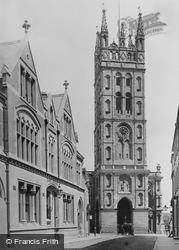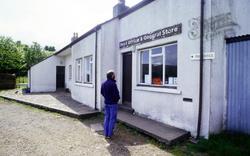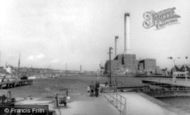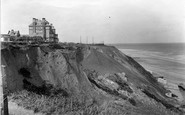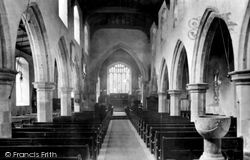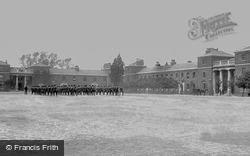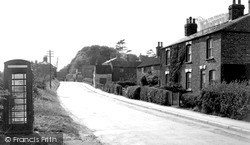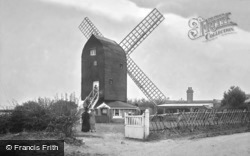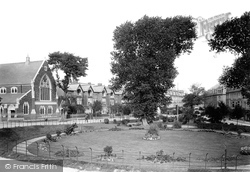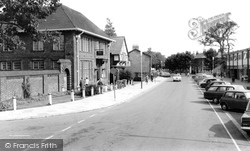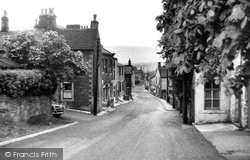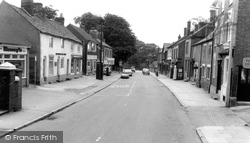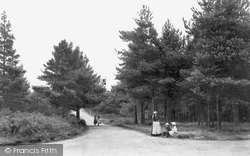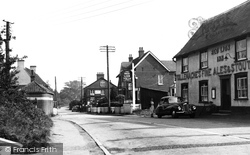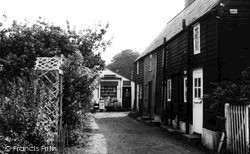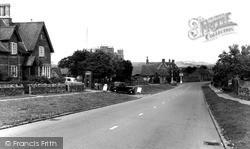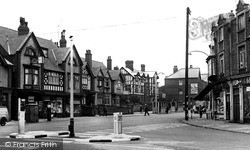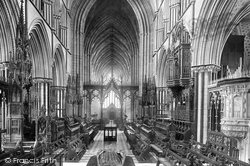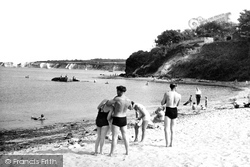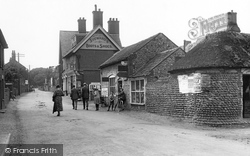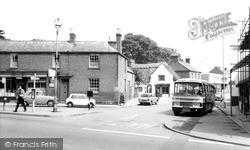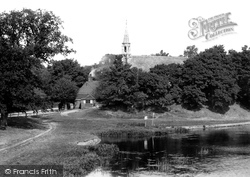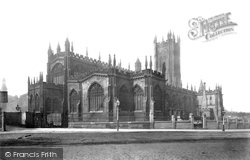Places
9 places found.
Those places high-lighted have photos. All locations may have maps, books and memories.
Photos
2,748 photos found. Showing results 981 to 1,000.
Maps
776 maps found.
Books
1 books found. Showing results 1,177 to 1.
Memories
2,736 memories found. Showing results 491 to 500.
My Life In Fishersgate And Southwick.
I was born in Southlands hospital in 1932. In 1935 I moved into 14 West Road Fishersgate and (when old enough)went to Fishersgate Infant school. In 1943 we moved into 21 Fishersgate Terrace, which at that time was ...Read more
A memory of Southwick by
My Days In Rosedale Abbey
My Life in Rosedale Abbey - Raymond Beharrell During the last war my brother and I lived in York very near to the main railway yards. The area was always on the target for the German bombers, being railway sidings. ...Read more
A memory of Rosedale Abbey by
My Childhood In Moore
i was born and brought up in Moore this is a picture of the old post office that was run by my aunt and uncle Jim and Josie Woods ,the little boy is there son Maurice who is my cousin Margaret Evans is with the dog and i believe the ...Read more
A memory of Moore by
60 Years On And I Still Love It!
My Auntie May Howard and her husband Frank, from St. Helens, had a wooden holiday bungalow she called Homestead in Dee Avenue Talacre - it was definitely 1961 onwards and possibly just before that and the community centre ...Read more
A memory of Talacre by
School Days And Beyond
Having just stumbled on this website I felt compelled to add my recollections of living in Fenham in Cheeseburn Gardens from circa 1961 to 1980. I lived 2 streets down the hill from the first contributor who lived in Ovington ...Read more
A memory of Fenham by
70yearsago
This is how long it is since I lived in Stokenchurch at "Rushmoor", Marlow Road. I left because my father was posted to Germany. My main memory is of a boy being sent to the Karenza cafe to get 6d worth of rubber rivets by a roustabout from the fair setting up on the Green.
A memory of Stokenchurch by
I Was There
After being de-requisitioned and restored at the end of WW2, the Overstrand Hotel was a massive building standing only yards from the cliff edge, it opened, then closed, then re-opened with a new bar called “Bubbles Bar” to cater for the ...Read more
A memory of Overstrand by
Avonmouth Docks And Bocm Silcocks
In 1977 I finished a Teacher Training Course at Redland College in Bristol. I was in need of a temporary job and was to find one in Avonmouth Docks where BOCM Silcocks (who had produced animal feed from grain and ...Read more
A memory of Avonmouth by
The Grange School
I don't know why but I loved the Grange , Mr & Mrs Miller were the heads , Miss Kipling the dancing teacher , Miss Coates & her black Labrador & the grey horse Friday. Sports Day was a grand event always remember it being a ...Read more
A memory of Welwyn by
Captions
1,653 captions found. Showing results 1,177 to 1,200.
The third building belongs to Mr Newman, the newsagent who also ran the post office. Next door is Siddalls, a family firm who have been selling shoes and handbags since 1936.
In this picture, the men on parade wear the uniform of the period, complete with spiked helmet, and the horse-drawn vehicle standing beside the post box, outside the pillared portico, may await an
The post office has moved, and is no longer in the far distance on the right of the road.
This is a fine old Sussex downland post mill with a domesticated structure enclosing the trestle.
Further down is the Post Office, erected in 1889.
This is a fine old Sussex downland post mill with a domesticated structure enclosing the trestle.
The Post Office is still there in this photograph, and so is the District Bank next door - two disappearing amenities that we once, more or less, took for granted.
The fells sheltering this village, most of which lies at the foot of this steep main street, rise to 1,000ft. The rest of the village follows the high road above the River Ribble.
The modern intrusions, such as Kinsell's electrical shop and the adjacent post office (left), do little to enhance the group.
This view from the church crossroads looks along Smugglers Lane towards the post office crossroads.
The Post Office and Stores (centre) run by C J Brook closed in 2002. On the left, the rounded brick building is now part of Hollingsworth's butcher's shop.
In this picture the East End Post Office can be seen on the right, the one building in the row not faced with weatherboard.The small store facing the photographer also housed the Coastguard Reporting
The large gabled house on the left of the street, with the telephone box outside, is the village shop and post office, both of which have since closed.
The post office has moved, and is no longer in the far distance on the right of the road.
The ornate lamp-post and drinking trough have gone, to be replaced by bollards and a zebra crossing.
The modern intrusions, such as Kinsell's electrical shop and the adjacent post office (left), do little to enhance the group.
The tomb in the foreground is that of King John (1167-1216), the first post-Conquest monarch to be buried in England; he lies at Worcester at his own request.
The largest observation post in England, it was used by Allied generals who watched the live-firing rehearsals for the D-Day landings, and were joined by King George VI on 18 April 1944.
The other properties towards A R Steward's shop have been at various times a post office, a hardware store, and a chemist's.
The battlemented tower of St Bartholomew's (left) just shows above the row of rather good brick and tile cottages, into which the post office has been thrust.
The cottage with the smoking chimney was rebuilt in about 1910, and houses the Clifton Hampden Post Office and General Stores.
The battlemented tower of St Bartholomew's (left) just shows above the row of rather good brick and tile cottages, into which the post office has been thrust.
The tomb in the foreground is that of King John (1167-1216), the first post-Conquest monarch to be buried in England. He lies here at Worcester at his own request.
The window that you can see to the left of the lamp-post now has modern stained glass in it, in wonderful reds and oranges, to depict the flames of the bombing; it was designed as a tribute to the Cathedral
Places (9)
Photos (2748)
Memories (2736)
Books (1)
Maps (776)




